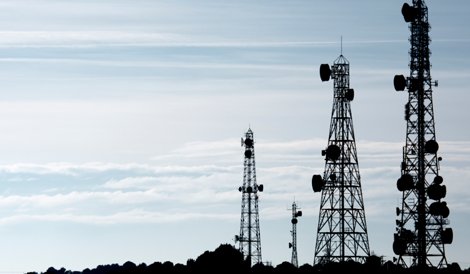The demand for faster networks has never been greater than today. To accommodate this - at least in part - more and more operators are adopting vectoring and bonding to increase speeds on the ‘last mile’.
Vectoring is a crosstalk-cancellation technology, whereby an out-of-phase signal of the estimated crosstalk is applied on each line in a cable, effectively making it disappear. This allows each individual line to operate at peak performance levels, unaffected by adjacent cables or bundles. The end result is a higher degree of reliability and signal quality.
Bonding refers to the use of multiple copper pairs to increase bandwidth, either bridging greater distances at a specific bit rate, or increasing the attainable bit rate. This is generally used for residential deployments, but increasing the number of pairs can make it useful for business applications, too. Both methods may result in a significantly increase of bandwidth.
This technology helps boost copper network capacity from the last distribution point to the end user. Up to 100Mbps can be offered (albeit over relatively short distances) by laying fiber up to a point which is as close as possible to network termination. From here, existing copper networks can take over.
Vectoring is generally seen as a way to save money on the last mile of FTTx rollouts and leveraging legacy copper infrastructure. In these instances, it has repeatedly proven itself to be a fine, albeit temporary, solution.
Changing role of the telco data center
Whenever vectoring is mentioned, it is almost invariably linked to FTTx. Vectoring, however, can also help open new revenue streams for telecoms providers by linking data centers to the outside world.
How does this work? Many telcos also operate their own data centers, where they aggregate immense amounts of data. When we examine their infrastructure, most of these data centers need to be future-proofed. Furthermore, developments such as the rise of ‘big data’ and customer demand for new information and entertainment services are changing the role of data centers. These are demanding a huge boost in the capacity of the (fiber) backhaul network and this will continue to grow exponentially.
Until recently, some 80% of data center traffic was generated by people using a desktop or laptop computer to access server-hosted applications over the internet or intranet. We’re now seeing a massive increase in mobile apps and cloud computing. As a result, there is an upsurge in traffic between servers. As data volumes continue to grow there is a realistic possibility this will result in bottlenecks and compromised service levels.
One of the main drivers of greater data transmission requirements is television services (interactive TV, VOD, video conferencing...). 8K television, for example, requires approximately 350Mbps.
The telecom industry is being pushed towards digital content markets as a result of several factors. Rapidly evolving mobile data technologies, for example, or Web 2.0 technologies, social networking, a growing market for streaming and on-demand broadband video content, and so on.
The link between vectoring and the data center
Vectoring can’t play a role in helping link data centers together, or joining up servers within the data center. However, for telcos, data centers with powerful content delivery networks are becoming increasingly vital. Vectoring enables the customer to receive HD Video On Demand services. Telcos aren’t eager to leave this market share entirely to dedicated companies such as Netflix, so they need to invest in data center infrastructure to provide these services.
Providing new services, which are enabled by high-speed residential internet connection (with vectoring being the simplest to deploy), will allow telcos to tap into new revenue streams.
Of course, there are some practical and technical consideration that must be taken into account such as ensuring the right Quality of Service policies and traffic scheduling.
Summary
As data volumes in and between data centers grow, driven by changing user behaviours and the arrival of 10G, for example, integrating legacy networks may relieve some of the load. Vectoring & Bonding can help realise this, forming a link between data center infrastructure and outside fiber networks. However, just like with for FTTx, this is a temporary solution, with full-fiber networks as the end goal.
The competitive environment for teleco providers is rapidly changing. As a result, network operators are exploring new business models outside of beyond delivery of voice and data. The deployment of vectoring can enable telcos to provide new services, such as video-on-demand to take a significantly larger section of the value chain. Previously, the data centers of telcos mainly provided internet connectivity to their customers. Now, however, they are expected to offer new on–demand services. Vectoring allows the fast deployment of high-speed residential internet.
Although the end goal is still end-to-end full fiber, vectoring is currently acting as a vital enabling technology which allows telcos to offer new, strategically vital services.

